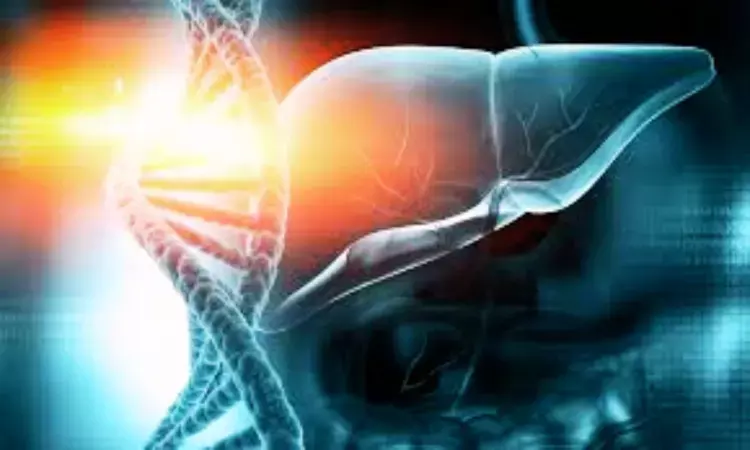- Home
- Medical news & Guidelines
- Anesthesiology
- Cardiology and CTVS
- Critical Care
- Dentistry
- Dermatology
- Diabetes and Endocrinology
- ENT
- Gastroenterology
- Medicine
- Nephrology
- Neurology
- Obstretics-Gynaecology
- Oncology
- Ophthalmology
- Orthopaedics
- Pediatrics-Neonatology
- Psychiatry
- Pulmonology
- Radiology
- Surgery
- Urology
- Laboratory Medicine
- Diet
- Nursing
- Paramedical
- Physiotherapy
- Health news
- Fact Check
- Bone Health Fact Check
- Brain Health Fact Check
- Cancer Related Fact Check
- Child Care Fact Check
- Dental and oral health fact check
- Diabetes and metabolic health fact check
- Diet and Nutrition Fact Check
- Eye and ENT Care Fact Check
- Fitness fact check
- Gut health fact check
- Heart health fact check
- Kidney health fact check
- Medical education fact check
- Men's health fact check
- Respiratory fact check
- Skin and hair care fact check
- Vaccine and Immunization fact check
- Women's health fact check
- AYUSH
- State News
- Andaman and Nicobar Islands
- Andhra Pradesh
- Arunachal Pradesh
- Assam
- Bihar
- Chandigarh
- Chattisgarh
- Dadra and Nagar Haveli
- Daman and Diu
- Delhi
- Goa
- Gujarat
- Haryana
- Himachal Pradesh
- Jammu & Kashmir
- Jharkhand
- Karnataka
- Kerala
- Ladakh
- Lakshadweep
- Madhya Pradesh
- Maharashtra
- Manipur
- Meghalaya
- Mizoram
- Nagaland
- Odisha
- Puducherry
- Punjab
- Rajasthan
- Sikkim
- Tamil Nadu
- Telangana
- Tripura
- Uttar Pradesh
- Uttrakhand
- West Bengal
- Medical Education
- Industry
Acquired hyperammonemia and carnitine deficiency mimicking urea cycle disorder: Case study

USA: A recent article describes a case of nutritionally driven acquired urea cycle disorder with carnitine deficiency leading to severe hyperammonemia, encephalopathy, and extensive MRI changes. All resolved completely with the correction of the underlying essential amino acid deficiency.
"It is important to find the etiology of underlying metabolic derangements and should accordingly treat and prognosticate," the researchers wrote. The findings were presented at the American Academy of Neurology (AAN) annual meeting in 2024.
Hyperammonemia is caused mostly by defects or overproduction in detoxification due to liver disorders. Rare causes of hyperammonemia include fatty acid oxidation disorder, urea cycle disorder, Reye syndrome, organic acidemias, and valproic acid toxicity. Ammonia is neurotoxic and can lead to cerebral edema.
Urea cycle disorders are a group of rare genetic conditions characterized by deficiencies in enzymes responsible for detoxifying ammonia in the body. These disorders often present with symptoms such as lethargy, vomiting, seizures, and hyperammonemia, posing significant challenges in diagnosis and management.
Michelle DeJesus Brazitis and Beenish Javaid from the USA report a case of a middle-aged woman with chronic alcohol-related necrotizing pancreatitis presenting with myoclonic status epilepticus with MRI brain indicating extensive symmetric T2 hyperintensity and diffusion restriction throughout the bilateral cerebral cortex with relative sparing of white matter, brainstem, deep gray nuclei, and cerebellum.
Workup revealed resistant (defiant to medical therapy and CRRT) and severe (265 u mol/L) hyperammonemia despite lack of cirrhosis, portal venous congestion, or inciting medications.
The study led to the following findings:
· Metabolic-genetic workup revealed a metabolic pattern-- elevated urine orotic acid and glutamine with low total and free citrulline level-- consistent with proximal urea cycle defect likely OTC- Ornithine transcarboxylase deficiency or CPS1- Carbamoyl phosphate synthetase 1 deficiency.
· The next-generation sequencing test was negative for any genetic cause (Urea cycle enzymes or transporters) of hyperammonemia. Thus, chronic pancreatitis leading to exocrine pancreatic insufficiency, protein, and micronutrient malnutrition was considered to be the etiology of acquired/secondary urea cycle dysfunction leading to hyperammonemia.
· IV Scavenger therapy with Arginine, L Carnitine, and ammonul- a combination of sodium benzoate and sodium phenylacetate contributed to the resolution of hyperammonemia, encephalopathy, and MRI changes.
In conclusion, recognizing acquired hyperammonemia secondary to L-carnitine deficiency as a potential mimic of urea cycle disorders is paramount for optimizing patient care and preventing unnecessary interventions.
"Further research is warranted to elucidate the underlying mechanisms and identify effective therapeutic strategies for this rare metabolic condition," the researchers wrote.
"It is important to find the etiology of underlying metabolic derangements and should accordingly treat and prognosticate," they concluded.
Reference:
10.1212/WNL.0000000000204946
Dr Kamal Kant Kohli-MBBS, DTCD- a chest specialist with more than 30 years of practice and a flair for writing clinical articles, Dr Kamal Kant Kohli joined Medical Dialogues as a Chief Editor of Medical News. Besides writing articles, as an editor, he proofreads and verifies all the medical content published on Medical Dialogues including those coming from journals, studies,medical conferences,guidelines etc. Email: drkohli@medicaldialogues.in. Contact no. 011-43720751


